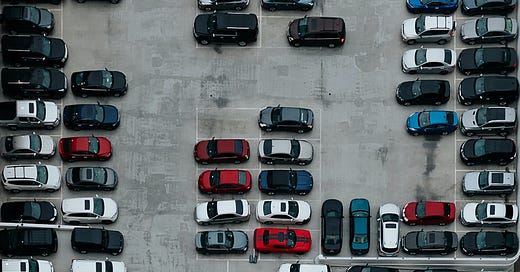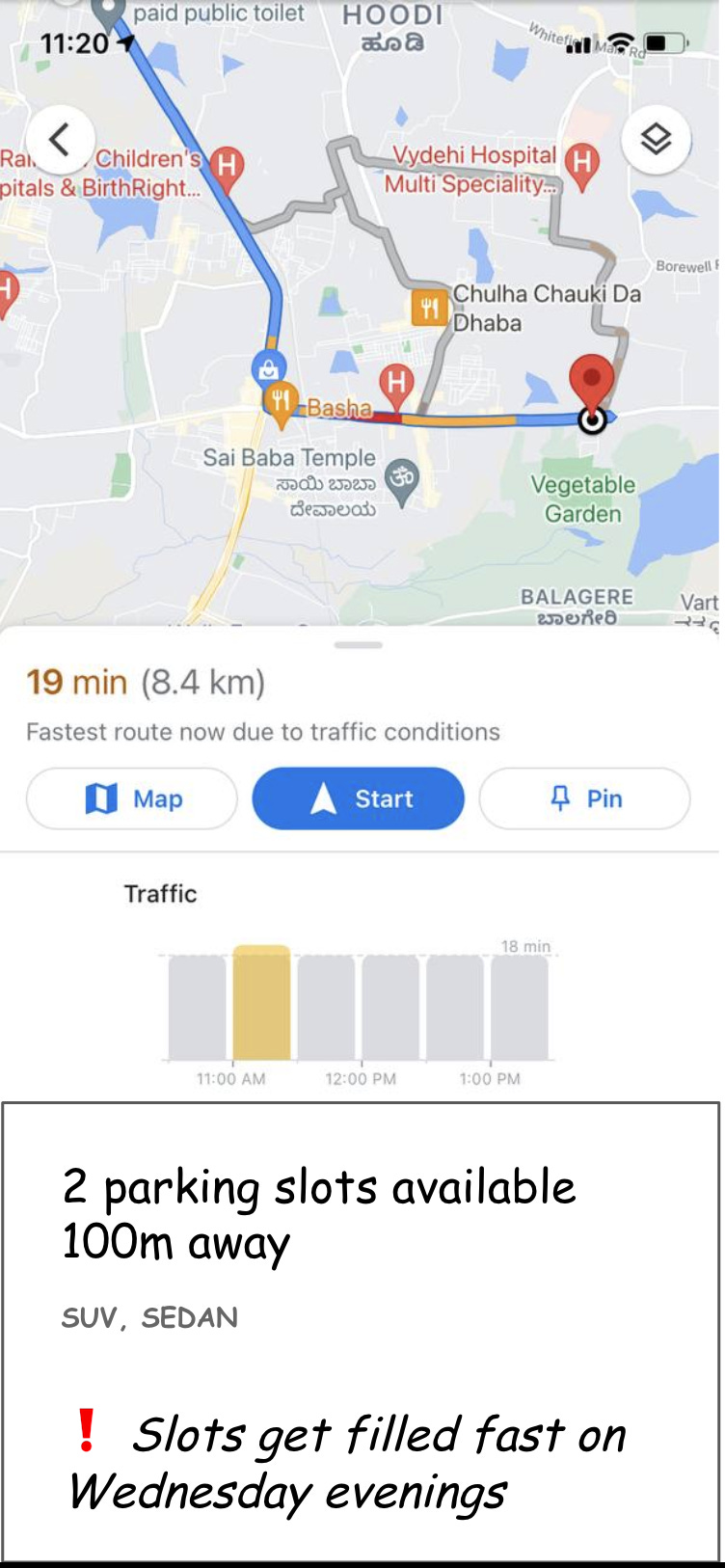Interview question: How will you solve the parking problem using Google Maps?
Photo by Ivana Cajina on Unsplash
When interviewing for some companies, it is common to be asked vague, abstract questions like this. In these situations, the interviewer is most likely trying to gauge how you react in the face of uncertainty and whether you can turn an unclear request into well-defined actionable requirements.
As a PM, you will often come across customer emails with strange feature requests that you cannot possibly understand at face value. It’s important to develop the skill to go deeper and get to the root of the customer problem before attempting to solve it. That’s exactly what they’re testing for during such interview questions.
As always, step one is to define the problem statement clearly.
Step zero is to take a deep breath—don’t panic! These questions are only scary at first. Once you start breaking it down, it becomes a whole lot simpler.
How is the task accomplished today?
Let’s dive deeper into how parking happens today, specifically in India.
Get into car
Drive to destination
Reach destination
Check if the destination provides private parking space
If there is private parking, find out the fee and pay
If there is no private space, drive around looking for free spaces on the street
If a free spot is found nearby, check if the car fits in the space
If it fits, park the car
If there are no free spots, search on a different street and repeat the process
Assumptions
We can make a few assumptions to narrow down the problem and come up with a more specific solution.
We are solving for Indian vehicles, drivers and roads, which means street parking is the main form of parking.
We can solve for 4-wheelers—specifically cars—since they struggle with parking more than 2 wheelers or larger vehicles.
We are only solving for outdoor parking areas that can be picked up by Google Maps and its current infrastructure. Basement parking in malls and other buildings would require a more complex system, and we will be skipping that for now.
Defining the problem statement
What exactly is “the parking problem”? There are a variety of problems related to parking, which vary based on the country, the legal system, the culture and many other things. Since we are from India, let’s focus on problems in this country.
Note: Be sure to think out loud and state these assumptions so that your interviewer is aware of the breadth of your thought process.
There are several parking problems in India. Some examples are
Lack of parking space
Unregulated parking fees
Parking in the wrong areas - in front of gates and stores, in no-parking zones
Not parking within the lines
Now that we have a list of potential problems to be solved, we need to prioritize the most important one and proceed to solve it. Before jumping into the prioritization process, check with your interviewer to see if you’re heading in the right direction, or if you’re missing anything major.
Prioritizing the problem
There is no one right way to prioritize a problem. It always depends on the ultimate goal of the company you’re working for. For this problem, we’re trying to use Google Maps to solve the problem. Since Google is usually about creating an impact by leveraging its large user base, we can prioritize this list by asking the question: Which problem is likely to create the highest impact for the largest number of people?
Let’s break it down for each problem statement.
Lack of parking space: This affects everybody who owns a vehicle, as parking is currently a chaotic and unpredictable process in India. This is a high impact problem.
Unregulated parking fees: This affects a sizable number of people who park in private areas. However, the fee is unpredictable but never higher than 100 rupees, which is quite affordable for people who own a vehicle. This is a medium impact problem.
Parking in the wrong areas - in front of gates and stores, in no-parking zones - This is a major problem for residents and store owners, but also for the vehicle owner who is in danger of having their vehicle towed. And this is a situation that happens quite frequently in India, so the number of people impacted would also be sizable. This is a high impact problem.
Not parking within the lines - This is only a problem in private spaces. And even in those spaces, there is always a security guard around to help the person park within the lines. This is a low impact problem.
We will now proceed to prioritize and tackle the two high impact problems.
Lack of parking space
Parking in the wrong areas
Who is the user?
There could be three types of users for these specific problems.
The major user is anybody who needs to park their car at a particular destination. This user could be
Car owner
Cab driver
Privately hired driver
Valet
A secondary user would be people who provide private (outdoor) parking space within their premises. This could be the facilities manager of large buildings or restaurants.
A tertiary user would be a home or store owner who needs to report that a car has been parked outside their entrance.
What does the ideal solution look like?
Let’s take an example of someone going to a restaurant on a Friday evening, and they are planning to drive. The ideal flow for this scenario would be
Before leaving, check Google Maps for directions and navigation to your destination
When you open Google Maps, it also highlights the available parking spots at your destination
If the restaurant provides private parking space, reserve a spot for the time of your arrival
If there is no private space, it shows you free spaces on the street
Google Maps shows information about
How many slots are vacant
At what distance from the restaurant
Trends regarding how long cars are generally parked at this location and how packed it is on Friday evenings
Whether the slot would fit large cars like SUVs
Additionally, Google Maps can show a statistic like “90% chance of getting a parking spot at this location at this time”. This would be a good feature to add in future versions after a reasonable amount of data has been collected over time
If the probability looks good, you can decide to take your car. (If it looks bad, maybe you can take a cab or pick a different restaurant with better parking options)
You can choose a particular parking space and start the navigation for that particular space
When you’re nearing your destination, Google Maps checks the status of the street once again and notifies you if it is taking you to a different (and nearest) spot
Most of this data can be collected automatically, like free areas on the streets, how long people have parked in a certain area etc.
Some data will have to be manually provided, like
Private parking providers will have to confirm how many parking spots they provide and where
No parking zones will have to be manually entered by law and order officials, or by locals who act as google local guides
People whose store or home has been obstructed by a car will need to report an issue on the app
GTM Strategy
As with everything else in Google Maps, the real power of the platform is realized when data is provided by its gazillion users. To do this, we would need users to provide useful information at certain points.
A good GTM strategy would involve
Onboarding for the new feature every time somebody looks up directions on Google Maps
All store owners will have an onboarding flow on their Google My Business account where they specify their parking areas and opt-in for reservations
Google Local Guides could be given special points for marking no parking zones on the map, and also for reporting wrongly parked vehicles from time to time
From a pricing perspective, there are a couple of options
There could be a subscription fee for businesses choosing to opt for private parking services and reservations through Google Maps
There could be additions to the Google Maps API for parking specific functions, which can be of use for business and other platforms paying for the Google Maps API




